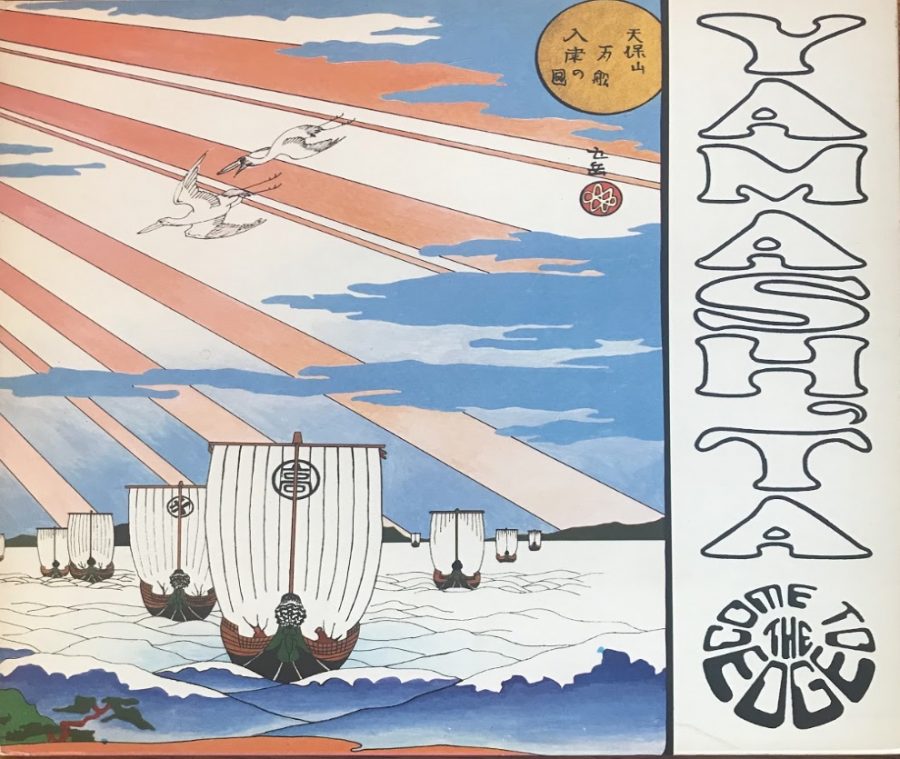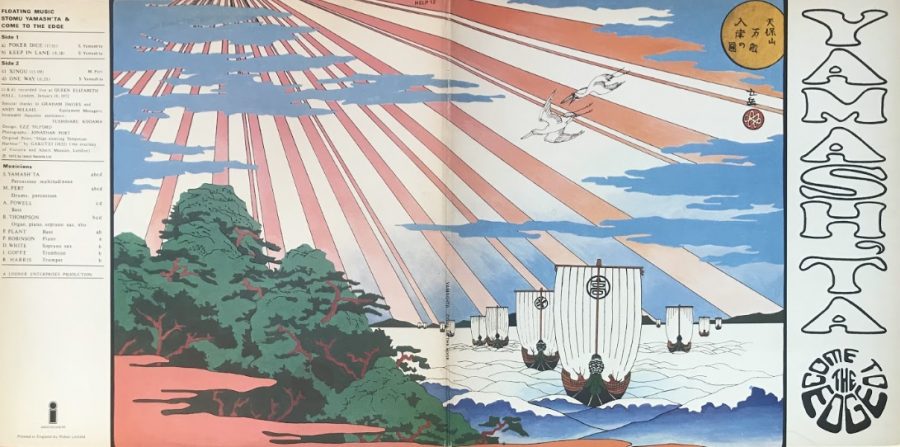Stomu Yamash’ta: Floating Music
February 16, 2021
The seventies was a decade like no other for music. Contrasting styles such as disco, fusion, rock, jazz, and blues all held huge popularity at the same time, suggesting that audiences were perhaps becoming more diverse in their tastes and acceptances. For musicians, this opened limitless possibilities which each artist could explore: styles could be combined, unique musical scales and modes could be utilized, and most importantly, the music of foreign cultures could be incorporated. One of the musicians who would not only thrive within this diverse music landscape but would also give rise to it was Stomu Yamash’ta, who following a extremely successful classical music career and the release of a minor album*, would release his first major sortie that delved into the world of jazz and rock in 1972: Floating Music.
Floating Music proved to be an amalgamation of Yamash’ta’s previous music education; his classical music training he received at Juilliard, Jazz training he received at the Berklee School of Music, as well as his knowledge of traditional music from around the world. The album itself was a collaboration of Stomu Yamash’ta and the band Come To The Edge, with a line-up consisted of Stomu Yamash’ta (various percussion) along with Morris Pert (drums), Phil Plante (bass, tracks A1-A2), Andrew Powell (bass, tracks B1-B2) and Peter Robinson (keyboards). Yamash’ta had met Morris Pert, the leader of Come to the Edge and its later reiteration Sun Treader, at a music festival in 1970 at the Aldeburgh Music Festival, whereafter the two became friends, and Floating Music was the first of two albums Yamash’ta and Pert would work together on.
Although for ease of description I might classify Floating Music as a jazz-rock album, the music which Yamash’ta and Pert created was something very unique for the time and culture which it was released in. The music notably did not contain the traditional guitar a band would have; instead of a guitar, the melody was voiced by Yamash’ta on percussion, Peter Robinson on keyboards, and other instrumentalists featured. Additionally, the length of the album, just over 50 minutes, and the album being a half-studio half-live album are characteristics that diverge from the commonalities of western music.
But Floating Music went far beyond breaking the cultural norms of western music: it existed as an expression of the music of numerous world cultures. From atypical time signatures to “Tibetan rhythms, Indian Scales, [and] gagaku structure” (inside cover), Floating Music integrated elements of various cultures to create something which could not truly be viewed as belonging to a single culture alone. And it is in examination of these elements within the broad scope of the album that one sees they are the essential medium from which the central theme of Floating Music is created: a theme of differences unified. The combination of tradition and modernity, studio and live recordings, and the music of different cultures show this as an omnipresent theme within an album which not only mitigates these stark differences to the ear, but uses them to create the uniqueness of the album itself.
Yamash’ta’s ability to integrate and combine themes within his albums is something a listener could easily recognize him for. His discography is filled with albums (and even a series of albums) which exist not as merely a collection of songs, but as an integrated piece of music or art itself. Floating Music is no different; in the album, Yamash’ta integrates and combines the music of various world cultures to create an album that is starkly unique and captivating. I hope that you take the opportunity to listen to the album and are able to appreciate the musical cultures, admire the musicianship (notably including Morris Pert’s innate ability to use complex syncopation in order to progress a simple melody), and explore the music of Stomu Yamash’ta.
* Sunrise from West Sea (1971) by Yamash’ta and the Horizon. A live album with a line-up of Stomu Yamash’ta along with Hideakira Sakurai, Masahiko Satoh, and Takehisa Kosugi, very little can be found on this album, and might possibly have been only released in Japan. No recordings exist online.
Tracklist
A1 Poker Dice 17:55
A2 Keep In Lane 8:38
B1 Xingu 13:09
B2 One Way 11:55
Cover Art
“Ships entering Tempozan Harbour” by Yashima Gakutei (1832)
For more information
https://www.youtube.com/watch?v=0mlKxkHPPGA
https://www.discogs.com/Stomu-Yamashta-Come-To-The-Edge-Floating-Music/release/1470771
https://open.spotify.com/artist/4PQtFdguSmlMb31LGJHBKm
https://open.spotify.com/artist/0LBYDhry1yve4a9HYT80qj
Sources
Floating Music, vinyl release (personal collection)
Sun Treader Zin-Zin, vinyl release (personal collection)



